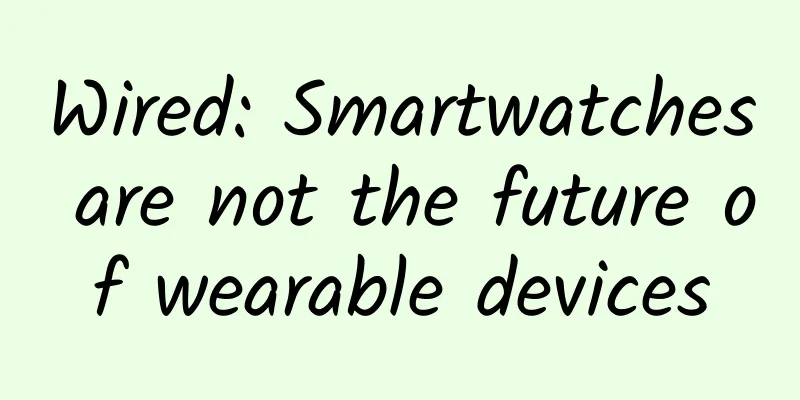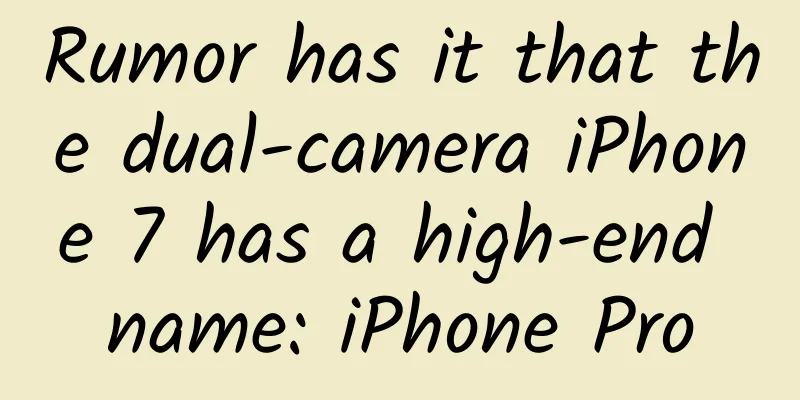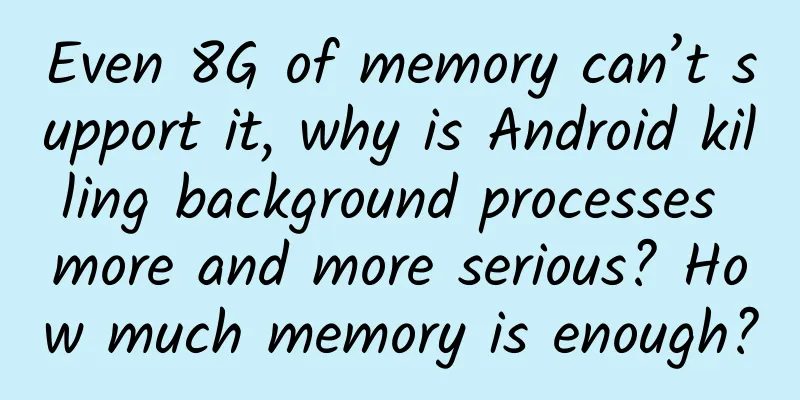Wired: Smartwatches are not the future of wearable devices

|
Wired writer Mat Honan believes that wearable devices don't have to be omniscient and do everything, they just need to focus on one thing. The following is a summary of the full article: Intel held a wearable device competition in San Francisco at the end of last year, with the theme of "whimsical". Entrepreneurs took to the stage one after another to introduce their designs to everyone, and at the same time, the word "whimsical" emerged again and again in my mind. A glove that tracks a worker's position in a shop? Fantastic! A tortoise-shaped bionic baby that new mothers can wrap around their chests if they have a premature baby that must stay in an incubator? Fantastic! A drone that you wear on your arm, and when you flick your wrist, it flies up, hovers in the air, and takes a selfie for you? I'm speechless! The designs seem to be from a sillier future, but they're pretty solid—at least solid enough to enter a $500,000 contest. Intel itself is experimenting with wearables. It acquired Basis, whose smartwatches are equipped with multiple sensors that detect the wearer's movement, heart rate, and skin temperature to track your activity and sleep; it's also launched a line of tech accessories; and there are rumors that the next generation of Google Glass will be powered by Intel chips. Why is Intel doing this? Because it believes that wearables will become more ubiquitous than computers or phones. I think that's a good idea. Because you don't wear just one wearable device - you wear many. Some people assume that we wear the same device all the time, which is a big misconception. Why this misconception? Because wearables, up until now, have been doing things that phones already do. Beyond tracking movements, beyond being a surrogate screen for your phone, what exactly are these wristbands and glasses? In fact, the wearable space will see a surge in new, singular devices that are tailored to different situations, rather than offering a function separate from your phone—it’s all about use-case engineering. Think of sports-specific clothing like Hexoskin that monitors your workouts, or medical devices like VitalConnect that track your vital signs and provide that data to your doctor, or earbuds that aren’t traditional hearing aids but can help you hear what you want to hear when background noise is too loud. We'll wear them when we need them and take them off when we don't. Despite the success of devices like the Jawbone Up and the endless rumors of an Apple smartwatch, the wearables we'll see will be more like functional compression socks than Swiss Army knives. In Intel's competition, ProGlove is a particularly practical device. It is aimed at factory workers and is suitable for use in workshops. It may sound a bit far-fetched to use a glove to monitor a worker's location, but it's a great example of a wearable device because in addition to tracking your movements, it can also make suggestions about your movements. "Let's say you need to change a tire on your car, and you wear a ProGlove glove that's connected to your iPhone. It knows it's an Audi, it knows where you are relative to the car, and by tracking your steps, it knows if you put the jack in the right place," said Brian Krzanich, CEO of Intel. "You can learn to play the piano with a set of gloves, and you can apply this haptic feedback technology to many things, not just industrial production." This is really cool. Using gloves that monitor your movements to train your muscle memory is a very novel idea and very different from what we have experienced before. I have a drawer full of dead wearables: Jawbone Up, Fitbit, etc. Once they run out of battery, I don't bother to charge them because they can do things that my phone can do. That's the problem with wearables. A lot of them are just old stuff in new bottles. But there's something exciting about some of the mission-oriented devices that emerged from this competition. They finally seem ready to be put on when we need them and taken off when we don't. As a winner of Toutiao's Qingyun Plan and Baijiahao's Bai+ Plan, the 2019 Baidu Digital Author of the Year, the Baijiahao's Most Popular Author in the Technology Field, the 2019 Sogou Technology and Culture Author, and the 2021 Baijiahao Quarterly Influential Creator, he has won many awards, including the 2013 Sohu Best Industry Media Person, the 2015 China New Media Entrepreneurship Competition Beijing Third Place, the 2015 Guangmang Experience Award, the 2015 China New Media Entrepreneurship Competition Finals Third Place, and the 2018 Baidu Dynamic Annual Powerful Celebrity. |
>>: Marketing: Apple says no one dares to be number one?
Recommend
At least 10 mm per year! Is our city sinking? | Expo Daily
300 million people in my country will be affected...
Operational case: The growth path behind "Zebra English" monthly revenue exceeding 100 million
What growth paths did Zebra English take to achie...
When Chang'e flew to the moon, she actually took away a "Changbai Mountain"? !
At 6:23 on June 2, 2024, the Chang'e-6 lander...
2021, those immortal stars
Source: Guangming.com Editor: Wang Zimo Editor: W...
After ten years of hard work and losses, and three failed IPOs, Himalaya still hasn’t told its story well
A company that can’t tell a story won’t be able t...
Is Bullet Messenger really that useful? Or is the desire to escape from the circle of friends too strong?
Editor's note: 80s, 90s, 00s - rather than ri...
Not just lung cancer! Why is it so hard to quit smoking?
Have you ever had such an experience? I finally w...
Community operation: teach you how to easily build a high-conversion community!
Everyone should have seen these two groups. There...
Product Operations: How to develop a growth strategy for a product?
After the concept of growth hacking was introduce...
Tips to improve landing page registration conversion rate!
Without further ado, here is a picture. This is t...
"Love in BC" lyrics mp3 network disk Baidu cloud download
"Love in BC" lyrics mp3 network disk Ba...
You lie down, but your brain is still learning at 20 times the speed
Life experience tells us that it is important to ...
How to apply for a Baidu promotion account and register a Baidu promotion demo account?
Baidu promotion does not have a simulated account...
How much does it cost to develop a Linyi kitchen app?
How much is the quotation for Linyi catering kitc...









